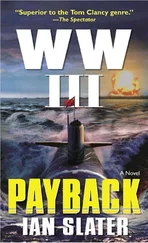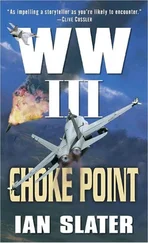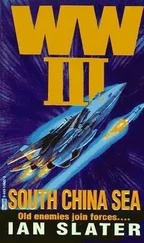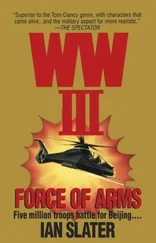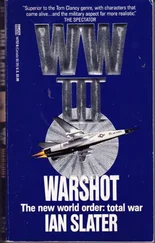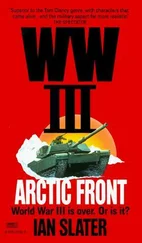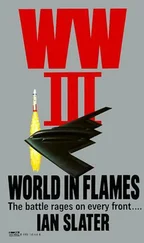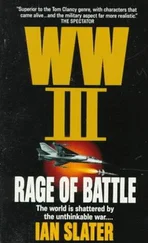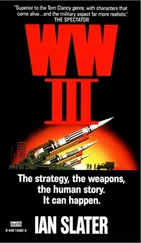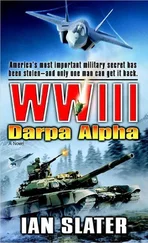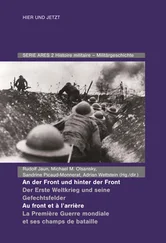Freeman, on the other hand, dismissed Cheng’s plea as “Beijing bullshit!” claiming that it was a “goddamned façade, a ready-made excuse for the PLA to hit and run wherever they like and then blame it on some bandit.”
“Why would they bother?” he was asked by Washington.
“Because it’s a hidden message to us that says, ‘You boys want a U.N. line, fine — but be prepared to lose men in “border raids” over the next twenty years.’ Same as Korea. There are still people in the U.S. who don’t know we lose men every year in ‘incidents’ on that damn Thirty-eighth parallel. This ‘bandit’ cover is Beijing’s way of reminding us that we’re stuck here to garrison the U.N. line and to pay for it — a trace ten times longer than the Korean DMZ — for the next twenty years.”
“Douglas,” they said in Washington, “is just looking for a fight. Get him out of here. Fast.”
And now he was sitting with Marjorie on the eve of April the twenty-fourth, watching the JDF set up camp on the U.N. line. At one point he could do nothing more than shake his head in disgust and disbelief. CBN was already interviewing members of the Japanese contingent.
“Beautiful,” Freeman said, his voice dripping with sarcasm. “Look at the background for this interview — you could plot their sections, strong points, and battle positions to the nearest yard. CBN’s giving us an aerial shot now — Jesus! Why don’t they just send the plans to Beijing and be done with it?”
“Well,” Marjorie said — she’d long given up on Douglas’s blasphemy—”I’m sure it will all work out for the best, Douglas.” She was an “all-for-the-best” lady — she could have turned the battle for Hue into an “all-for-the-best” event. She was getting on his nerves, and he was trying to think of a way of telling her that from now on he had decided to stay up at Fort Ord. He figured his duty to his dead wife, to give Marjorie a chance to “look after you,” had long been fulfilled. Though he was watching an earlier taped newscast of the JDF near Poyarkovo, it was already dawn there and a phone call from a sympathetic colleague at the Pentagon informed him that Poyarkovo was as of this moment under heavy attack — U.S. fire-support teams being rushed from both the western and eastern sectors of the rectangle to try to help the JDF hold. The forward slope nearest the Amur, or Black Dragon, as the Chinese called it, was already under heavy 81mm mortar assault.
By the time the Americans got there it was too late for the JDF to regroup and retake the forward slope they’d lost. Now they had to fell back along a five-point reverse slope defense behind a crest on the northern side of the river, the forward half of the five-by-ten-mile area already lost to waves of what were being called “Chinese irregulars.”
The Japanese were in shock. While they had quickly placed LAW antitank teams and machine gun nests on either flank, producing a withering fire, a tank ditch as the TRP — target reference point — the Chinese, none of whom were dressed in army garb, were running through the mine fields. As one man fell, another used him as a stepping stone just as the Russians had done at Stalingrad. And Chinese were already using bamboo ladders to cross the eight-foot-wide by five-foot-deep antitank ditch only yards below the crest. But where had so many Chinese come from, taking the JDF by complete surprise?
That question was about to be answered by a reconnaissance flight immediately ordered by Colonel Dick Norton.
* * *
A Stealth F-117B fighter was at Sapporo Airfield in northern Japan, but a hairline fracture had been found in its RAM (radar-absorbing material) contoured intake grid. The concern was that the fracture, under the enormous stresses imposed on the aircraft, might suddenly become something much larger, possibly radiating out to the wing. In any event this was the reason that the carrier USS Salt Lake City in the East China Sea was contacted and ordered to launch immediately a photo reconnaissance of the Poyarkovo area.
Though by now the F-4 Phantom, the wondrous fighter of an earlier age, was all but extinct, relegated to a secondary role as a quick photo recon aircraft, it was at this moment exactly the right plane in the right place and so was given the mission to find out just how much ChiCom activity was going on along the sector of the U.N. line now under attack and how many troops were massing on the southern bank of the Amur, in Manchuria. Was this a local warlord action or merely a tactical probe for something much larger?
As the carrier steamed into a saffron China dawn, twin ribbons of steam rose and broke ghostlike from its angled deck catapults, and the deck director, a yellow dot against the wide gray expanse of sea and sky, watched as the F-4’s deck crew swung into action. Suddenly the plane had the most important mission aboard, a return to its old glory, the Phantom’s twin nose wheels rising slightly as they passed up over the shuttle, the catapult bridle looped over the shuttle and onto the two wing forgings.
The bridle’s slack was taken up, the cable now looking like a huge black rubber band stretched beneath the nose strut, which now rose to full flight attitude, and the wings. On deck the bitterly cold wind whistled about the plane’s canopy, kerosene fumes mixing with the salt air of the sea, the pilot watching the deck director raise his hands, turning them as if he were securing twin-valve wheels aboard a submarine. It was the signal to go to full afterburner thrust. The howl of the notoriously smoky J79 engine became a banshee scream, the fighter straining full against the bridle.
The yellow-jacketed deck officer dropped to one knee, right arm extended sideways, pointing seaward out over the deck. His action was immediately followed by the Phantom, as the plane, its pilot slammed back hard against the Martin-Baker ejector seat, was hurled aloft in 2.4 seconds in less than a two-hundred-foot run. The Phantom banked sharply to the left and headed toward the blurred squiggle of gray that was the Manchurian coast.
* * *
General William Beatty, the man with whom Washington had replaced Douglas Freeman as C in C Second Army, had surprised the joint chiefs in Washington with the speed with which he’d dispatched his troops to help the Japanese Defense Force plug the gap at Poyarkovo, even though he was not in time to help much. As the Chinese withdrew, they left behind them a savaged and demoralized JDF, Master Sergeant Sato and officers killed at the river’s edge.
In fact, more Chinese — over two hundred — lay dead than Japanese and Americans, but the shock effect of the Chi-Corns’ attack had been total. American observers were quick to note how many of the Japanese had been either decapitated or had limbs hacked off despite, it was believed, having been dead already as a result of the fusillade of small-arms fire from the waves of Chinese infantry. Most of the Chinese dead had fallen victim to the JDF’s mine field; the Chinese, in an eerie action reminiscent of the kind of fanatical Japanese defense that Americans had come to expect in World War II, had used the bodies of their dead and dying comrades as stepping stones in a crazy path of human flesh to cross the mine field.
General Beatty immediately ordered the American First Battalion of II Corps to pursue the Chinese irregulars or whoever they were across the Amur to destroy them and/or teach them the lesson that this was one U.N. peacekeeping force that wouldn’t sit still and tolerate such violations of the DMZ.
By 1400 hours the American First and Second Battalions had crossed the slow-thawing ice of the Amur River and were engaging rearguard elements of the fleeing Chinese force on the river’s southern — that is, Chinese — bank, the Americans of II Corps already taking dozens of prisoners but struck by the speed of the Chinese withdrawal. Beatty wisely ordered pontoon bridges at the ready should a sudden thaw in the unpredictable spring weather weaken the ice and so temporarily cut off the U.S. supply line. He then ordered two more battalions across the river. It was the high point of his career and his downfall. It wasn’t that he had exceeded his mandate in ordering the battalions across the border — in this Washington and Tokyo, pushed by outraged public opinion in both countries over the number of Japanese and American soldiers killed, fully supported Beatty’s action.
Читать дальше

